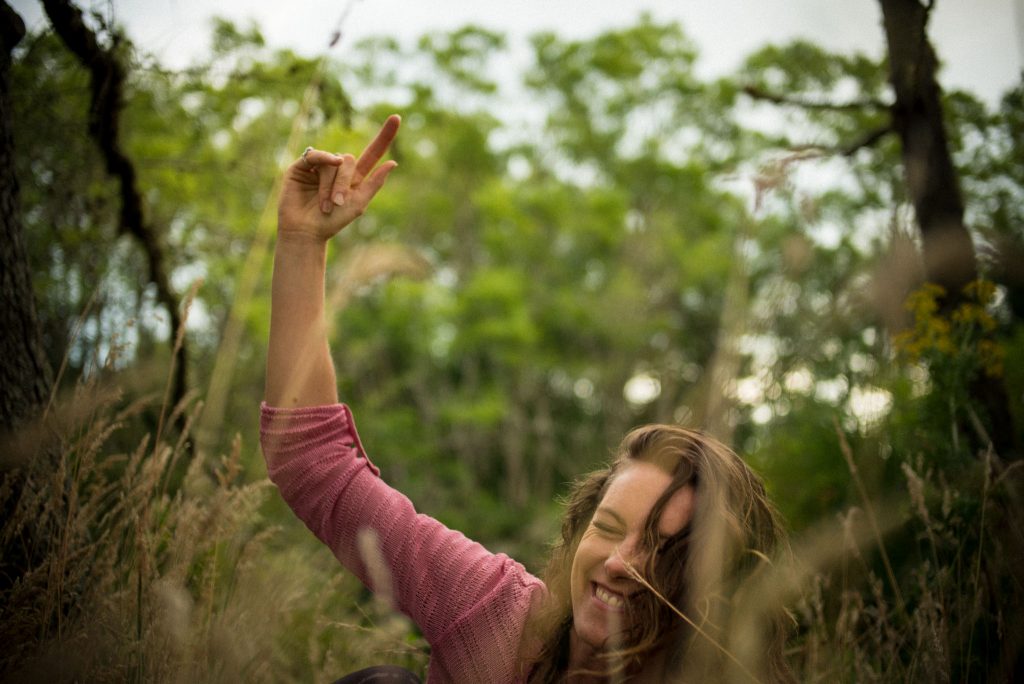 Yes! I can breathe! Photo Credit: Pete Longworth
Yes! I can breathe! Photo Credit: Pete Longworthby Kara-Leah Grant
Twenty one years after my first yoga class, I finally learned the most basic of all yoga – I learned how to breathe properly.
Yes despite all those years on the mat, and all the many teachers I went through, and all the years of home yoga practice, I didn’t master Yogic Breath until 2016.
Yogic Breath is elementary to yoga practice.
It involves inhaling first into the belly, allowing it to fully expand out, before filling the chest and finally the clavicular (under the collar bones) with air. Exhaling reverses the process, first allowing the air to release from the chest before letting the abdomen empty and finally exhaling fully. The emphasis is on the exhale, which then makes a deep / full inhalation almost automatic and effortless.
For many years, I used a Yoga Nidra recording which included three yogic breaths at the beginning of the recording. Every time the teacher lead into those three breaths, I struggled. I just could not breath in that way.
I could breath into my belly ok, but at the top of the belly or the bottom of the chest it felt like there was an iron band around my lower chest which made it impossible to continue to breath smoothly up from the belly into the chest.
Those three proper yogic breaths were never enough to shift the iron band and I just accepted that this was something I couldn’t do.
This iron band showed up in other ways – simply put, I struggled to get a full inhale during my asana practice. Vincent Bolletta noted this when we did a one-on-one session and suggested I work on it. He may have even told me how to do so. Yet that sense of blockage was so strong that I didn’t want to go near it.
Of course, any kind of blockage in the physiology like this also points to an emotional blockage.
Being able to inhale is all about being able to receive, about being able to soften and open and let emotion flow with ease through the system. Somewhere along the way, I had clamped down on this aspect of my being, fully suppressing it. No way was I going to soften and open and let emotion flow.
Until a recent retreat in Bali I was co-facilitating with Ben Ralston. Ben is thoroughly trained in Sivananda Yoga as an advanced yoga teacher. He’s been teaching and practising for decades and is thoroughly schooled in the foundations of the practice, and teaching the practice, in a way that I am not.
The first day, Ben led the retreat participants through Yogic Breathing.
I participated in this Pranayama instruction, and of course I struggled. I just could not do it. Ben noticed, and in our debrief at the end of that morning’s session brought it up.
“What’s with your breathing?”
I explained and even as I did, I could feel how pathetic this was. Here I was, twenty years into a practice, a decade or more of teaching, and I hadn’t dedicated myself to mastering the most simple of all pranayama. Why was I avoiding this? What was I afraid of? Now was the time to confront this, once and for all. After all, I had an experienced and caring teacher at my disposal for the next five days. It was the ideal opportunity.
Every morning, when Ben led the pranayama at the beginning of our morning session, I would participate.
I surrendered to doing what I was told, even though I hated it, even though it was uncomfortable, even though it made me feel useless because I couldn’t take a decent inhale.
I noticed how my breathing had developed all kinds of work-arounds that made me feel like I was breathing powerfully – like being able to expand my ribs out sideways beautifully. My breath almost seemed to have a life of it’s own and I had to keep coming back to the very simple practice of yogic breathing.
Inhale belly, inhale lower chest, inhale upper chest. Exhale upper chest, exhale lower chest, exhale belly. Over and over and over.
Then I would lead the morning session which consisted of discourse before a yoga practice, before participating in the 30 minute Yoga Nidra that Ben led to finish the session.
One day, maybe three days into the practice, I lay down into Yoga Nidra, with full awareness on Yogic Breathing for the entire 30 minutes and I noticed that something had dropped and softened. I could inhale. And it felt amazing! So soft, and open and effortless!
I didn’t have to tell Ben – he commented on it as soon as we began our debrief. The dam had broken, the iron band had bust wide open.
I wish I could say that was it, and for evermore I was able to breath with ease in the proper manner. But no, for the next month, my ability to inhale smoothly up the frontal plane of my body vacillated back and forth. Sometimes it was there, sometimes it wasn’t. But I kept practicing. And it kept getting easier. Entire sections of my lungs opened up to me and I felt like I was inhabiting new rooms within my body – places I had never explored or entered in 41 years of living.
And all this from breathing! The most basic of all yogic breathing.
Coincidence or not, post-retreat, I also experienced the most challenging emotional time of the last decade. I was hit by wave after wave of deep grief, and depression and I could barely function.
Was this long-held emotion finally pouring out of my body after being blocked and suppressed for decades? Was this why I had subconsciously avoided learning to breath properly for twenty years of yoga practice? Possibly.
Simultaneously there was a shift going on in my relationship to living – less about control and more about flow. This of course mirrors the breath. It was I who had clamped that iron band around my chest. I was the one who had been seeking to control my breathing and by extension, my emotions, myself and my life.
Yes, it was all unconscious – a way of avoiding apparent suffering. But it created a separation between me and my breath, me and my emotions, me and my life. Now, as I learned to let go and let breath, I was also learning to let go and let life flow.
I have always known that the breath and our relationship to it is the most powerful aspect of our yoga practice.
I always say in my classes that the breath is ultimately our teacher and it will guide us into our bodies, into our emotions, into the unconscious. I knew all this, and yet despite that, I was still avoiding the most basic breathing in Yoga.
This is the danger of modern yoga practice. With no single teacher watching over me or systematically helping me learn the foundations of a practice from the ground up, I was able to avoid breathing fully and therefore feeling fully and living fully for twenty years.
Now, five weeks later, I don’t have to work at breathing in the proper manner. It’s just happening, naturally. I can finally breathe, with ease, right up my frontal plane, beginning with the belly, moving into the lower chest and finishing at the upper chest before reversing the process to exhale.
This is freedom, right there.

For me, I’m wondering if the right place on our journey is the right place, you can only feel or see where you are stuck when you have the right teacher to open your eyes, thereafter more can be seen, which teacher helped??? Maybe the internal one who says ‘it’s time’ and committing to going on Retreat with Kara-Leah & Ben 🙂